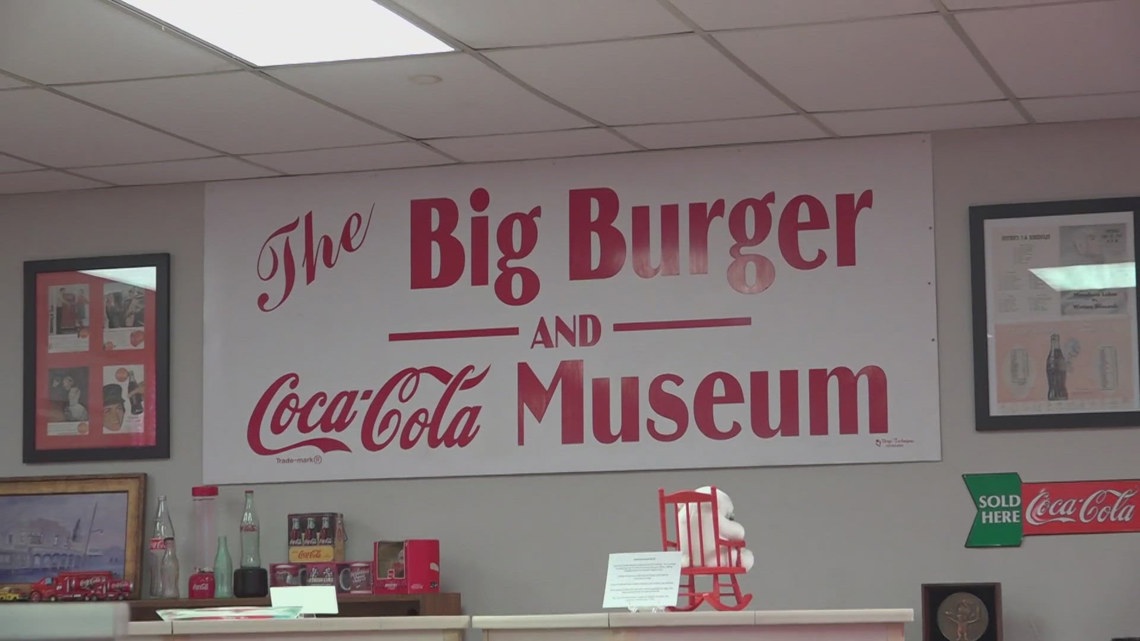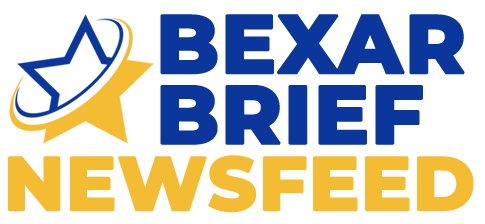
The Big Burger and Coca-Cola Museum preserves Monahans’ soda heritage thanks to donations from the Dunagan & Wetzig family.
MONAHANS, Texas — You might have heard of the Million Barrel Museum before, but what you don’t know is that a small building within the museum site holds a fizzy slice of local history: The Big Burger and Coca-Cola Museum.
Brenda Kizziar, librarian for the Ward County Archives, said the story began in the 1920s with a traveling salesman from Midland named John Dunagan.
“He bought rights from a lady named Hope Smith, and that was for a Coca-Cola facility. The very first one was in McCamey, and it did well,” Kizziar said. “He decided to expand and came to Monahans because of the railroad. Monahans was known for having excellent water, so Mr. Dunagan started a Coca-Cola plant here in the 1930s. His two sons, Robert and Jay Conrad, worked in the plants here in Monahans and Marfa.”
The Dunagan legacy in West Texas spanned decades, paving the way for other locals to leave their mark on the Coca-Cola story in Monahans.
Kizziar said Dan Wetzig, who worked for Jay Conrad as a bookkeeper and payroll officer, spent about 10 years with the company.
“The plant did well, but in the 1960s, they moved locations. In the 1980s… the plant had an explosion. Even though they repaired what was destroyed, they decided to close,” Kizziar said.
Dunagan supervised reconstruction after a June 26, 1980, gas leak explosion rocked the production building, according to a 1987 Dallas Morning News article.
Kizziar said the museum exists because of the generosity of the Dunagan family.
“In honor of the Dunagans—who donated a majority of the artifacts we have here—this building became a home for that history,” Kizziar said. “Mr. Wetzig eventually opened a little restaurant called the Big Burger with his wife. They collected Coca-Cola memorabilia during their entire time there. When he passed away, his widow, Elaine, donated many of those artifacts… and that’s how we have our museum.”
Inside the museum, Kizziar pointed out a map of the United States with pins marking where Coca-Cola bottles in the collection came from.
Bottles like these were once cleaned using a Meyer-Dumore, one of the preferred bottle-washing machine manufacturers in 1938. The eight-wide machine at the Coca-Cola Bottling Company in Monahans could wash 100 bottles per minute.
Kizziar said the shelves are filled with tiny pieces of Coca-Cola history.
“In this museum, we have shelves behind you and to my right, filled with the tiniest little pieces of Coca-Cola history—cars, cases, bottled Coke… you have to look closely or you’ll miss something that might speak to you,” she said.
She also noted some of the drink’s unusual origins.
“It was formulated as a cough medicine… and years later, they put actual cocaine in the Coca-Cola. People laugh when they hear that something we now enjoy with popcorn or a hamburger had such a different beginning,” Kizziar said.
Kizziar said the museum reflects how the bottling plant became part of the community.
“Because we had one of the bottling plants here, it just became part of us,” she said. “And with the Wetzigs and the Big Burger… they welcomed everyone, whether you were a high school student grabbing lunch or a family out for dinner. The Dunagans were big supporters of the Sandhills and donors to the archives… so the Coca-Cola plant is a part of them that lives on through this museum.”
